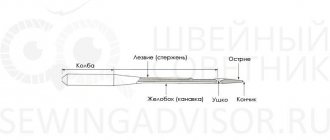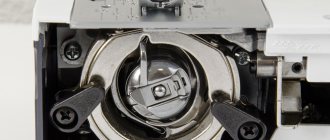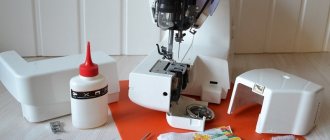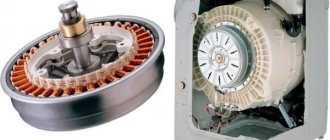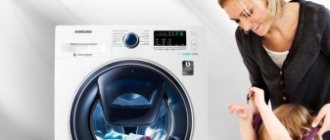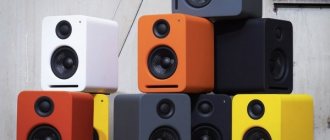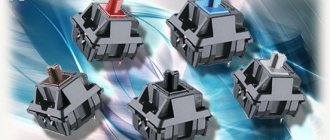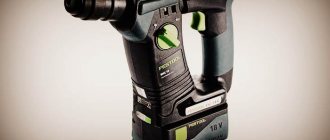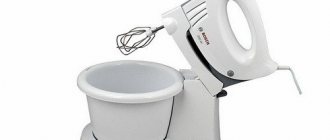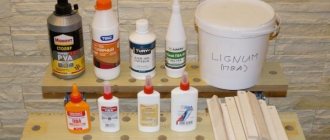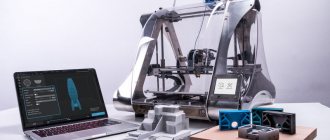Sewing machine diagram
The user can only see the outside of the machine and its working parts, which are located outside the device.
However, inside there is a complex mechanism that only professionals can understand. The main part of any model, even the most modern, is considered to be the shuttle. It is made from high-quality wood, its main task is to transfer cross-fibers in the fabric production procedure. The basic parts that no unit can do without include the following components:
- Flywheel;
- Sleeve;
- Winder;
- Platform;
- A wheel that regulates the required type of stitching;
- Sleeve stand;
- Reverse stroke (receiver);
- Needle holder;
- Needle plate;
- Paw;
- Handle for raising and lowering the presser foot.
Sewing machine device
These elements are related to the external part of the device, so the basic workflow seems quite easy. A complex internal system powers the shuttle using many additional parts. The shuttle device allows you to create unusual stitches of various shapes, while manipulations are carried out quickly and efficiently.
Differences between different types of sewing machines
A wide range of modern models makes it possible to choose the optimal specimen that will satisfy individual needs. Among the huge range of models there are different types of sewing machines:
- with manual drive - used at home, due to mechanical control they are easy to operate. The manual drive allows you to process different fabrics, even leather and jeans. Such devices rarely require repairs and are durable and reliable;
- electromechanical - designed with an electric drive, the device is controlled manually and activated using a switch. Such units are divided into two types: vertical and horizontal. The first models are cheap, there is quite a strong vibration, and the stitch width is limited. Horizontal ones have advantages - the device does not resonate, so there is no tangling of the thread. Electrical appliances are intended for small jobs, repairing things;
- electronic - intended for professional purposes. The built-in display with a microprocessor transmits commands to the screen. Such models do an excellent job with all types of fabrics, even corduroy and guipure. The control is carried out by a pedal and a lifting lever. With independent machine control, the sewing comes out of high quality;
- Overlock - used for finishing the edges of fabrics with loose weaves. The main part of the models has knives for removing excess allowance. This option significantly saves time during the sewing process. There is no shuttle in such devices; its options are provided by special loopers. The display provides recommendations for the correct installation of threads;
- embroidery - such a machine is necessary for creating masterpieces. A computer program allows you to decorate fabric with embroidery using different techniques. When uploading files, you should select the required hoop size, and then thread the threads of the required colors. The procedure itself does not require human supervision, it is carried out independently;
- flat-seam is an industrial device with household modifications. The most suitable option for processing elastic types of fabrics. The stitch is done in a special way to prevent stretching of the material. This type can be used for knitwear, polyester, stretch.
Types of sewing machine drives
There are only 2 ways to set the flywheel in motion: muscle power and an electric motor. In the first case, the speed of operation of the sewing machine is set by the handle of the hand drive or the pedal of the foot drive. In the second, to start the device, it is enough to press the control pedal with the necessary force.
Manual drive
This type of mechanics involves running the shaft using a small flywheel to which a handle is attached. The low speed of operation of such a device is combined with a number of inconveniences: the operator’s right hand is busy setting the machine mechanism in motion, and control of the movement of the fabric is carried out by the left. Therefore, such models were soon replaced by more practical ones.
Foot
To free the operator's hands, the sewing machine was equipped with a stand. Its design includes a movable pedal, when moving the pedal, the force is transmitted through the leash to the drive wheel. And with the help of belts it drives the flywheel of the machine frame located on the table. The operator's hands were freed, the speed and quality of the stitch increased.
Such a device is still convenient as a teaching aid, since a seamstress can easily adjust the speed of its operation in accordance with her capabilities. But the heavy frame is difficult to move to the right place, its operation cannot be called quiet, and it is quite difficult to develop the speed necessary for an experienced user. This is what caused users to switch to a more modern drive.
Electric
The electric motor was initially installed on the “hand-held” or “foot-operated” machines that were common at that time in order to increase their productivity. The speed is controlled by the operator’s foot - the stronger the pressure on the pedal, the greater the speed of the machine. Such twins (pedal + servomotor with a power of up to 150 W) can still be found today, which is what the owners of reliable, rare mechanics use. But the operation of the sewing machine itself remained quite loud, and its functionality was limited.
Classification of sewing machines by type of control
All sewing machines are divided into three main classes:
- Mechanical;
- Electromechanical;
- Electronic.
We all remember our grandmother’s old “Singer” with a simple hand or foot drive that set the sewing mechanism in motion. Later, the Soviet “Chaika” and “Podolsk” appeared with an electric drive and backlight bulbs. These and similar machines belong to the mechanical class. They are simple and quite reliable, can sew almost any fabric, and are easy to maintain and repair.
On the other hand, mechanical sewing machines are usually equipped with the most primitive swing-type shuttle, which limits the speed of work and increases the noise level. The disadvantages include poor functionality, a small number of stitches produced and exclusively manual settings.
The electromechanical sewing machine has evolved significantly from its predecessor. It is equipped with an electronic unit that controls all functions and settings. The most inexpensive models of electromechanical sewing machines are still equipped with oscillating hooks. The new generation equipment is equipped with two modern types of shuttles: horizontal, which provides high speed and soft movement, and vertical, an almost perfect mechanism that produces perfect stitches.
The productivity of electromechanical machines with modern shuttles is incomparably higher, the noise level is quite comfortable, and the range of possibilities and variety of stitches is incomparably wider. The electronic control unit has a certain set of programs, and also allows you to independently select and save settings for certain operations in memory.
As for the disadvantages of such machines, there are very few of them. Firstly, they are much more expensive than mechanical ones. Secondly, they require a more attentive attitude in terms of maintenance, and in the event of a breakdown, repairs in the workshop will also be expensive.
An electronic sewing machine has even more functionality, and each of them is controlled by a built-in microprocessor. Working on such a machine is as comfortable as possible: you just need to select any of the programs stored in memory and press the appropriate button. Depending on the model, there may be several dozen built-in programs. The tailor does not need to manually adjust the length or width of the stitch, or look for the desired type of stitch in the settings - the machine will do all this for him. The processor controls the stroke of the needle, regulates the speed of work regardless of pressing the pedal, controls the thread tension, etc. Electronic sewing machines are equipped with the most modern shuttles, so their stitch quality is impeccable.
As for the disadvantages of such equipment, first of all, buyers may be put off by the very high prices for cars of this class. Electronic “filling” is very sensitive to failures and voltage drops in the electrical network. Most models are not designed to work with very dense and thick materials. And, of course, the cost of repairs can amount to a very impressive amount.
What kind of drives do sewing machines have?
Older models were driven by hand or foot drives. A little later, electric-powered machines appeared, and today needlewomen work on computer-controlled devices.
Let's look at each type of drive in more detail.
Manual
The simplest option when it comes to mechanics. However, sewing on such a device is extremely difficult. A special handle is attached to the flywheel here, which must be turned for the machine to sew. This is inconvenient for a number of reasons:
- the right hand is busy, you can actively work and regulate the sewing process only with the help of your left hand;
- fatigue from such work accumulates quickly;
- Sewing thick fabrics by hand is especially difficult.
It is not surprising that replacements for manual machines were quickly found.
@infourok.ru
Foot
Such a machine has a bed - a platform on which a special pedal is located. To sew, you have to constantly press on it with your feet.
Of course, a foot drive is more convenient than a manual one. At a minimum, because the seamstress’s hands are free. But it also requires physical effort, and your legs get pretty tired after a long time of sewing.
@tsaritsyn.rf
Electric
Despite the fact that hand and foot machines are still used, they are far from the best option for sewing. Therefore, they were quickly replaced by electrically driven cars. The pedal here works in combination with a small motor. Of course, the sewing speed on such a machine is higher than when working on the first two types of drive. However, it is very noisy, and there are very few functions on it.
@infourok.ru
⇡#Types of sewing machines
All sewing machines are divided into industrial and household. Usually a household one can do a lot of things at once, and an industrial one can do one thing - but it can do this one thing very well and for days, years, kilometers - without breaking down. At least that's the idea.
However, industrial machines are unlikely to interest you, unless you intend to open a small sewing enterprise - they are very expensive, bulky and noisy in operation - so in this material we will concentrate on household ones. Household machines are divided into:
- electromechanical,
- computer,
- sewing and embroidery
- embroidery,
- overlockers,
- cover,
- carpetlocks.
What does all this mean, and which category should you choose?
1. Electromechanical sewing machines are the simplest of all. The entire internal filling of such a machine is mechanics, that is, levers, shafts and gears. Only the motor that drives it all is electric.
Example - Minerva M832B:
- 32 types of stitches
- semi-automatic loop
- vertical shuttle
- stitch length 4 mm
- stitch width 5 mm
The undoubted advantages of this type are reliability, low price, and inexpensive repairs in case of breakdown. Conventional electromechanical machines are inferior to computer machines in the speed of operation and number of functions, since the technological design features do not allow for stitching of complex shapes, but are perfect for beginning seamstresses, or those who want to have a reliable assistant for small household needs. However, a coat, jeans, and a ball gown are quite capable of a good and properly adjusted electromechanical machine. The approximate price category of such machines is 3–5 thousand rubles. Simple, affordable, reliable.
2. Computer sewing machines are distinguished by the presence of a computer board that provides overall control of the process, which allows this type of machine to carry out quite intricate stitch programs. The movement of the needle relative to the fabric is controlled by a microprocessor. What a particular model can do depends on the amount of memory and the number of programs of this machine “brain”.
Example - Minerva DecorExpert:
- 197 types of operations
- automatic loop
- horizontal shuttle
- stitch length 4.5 mm
- stitch width 7 mm
Their starting price is approximately two to three times higher than the price of electromechanical ones. At first glance, the huge number of stitch types seems to be an undoubted advantage. These include 15 types of different loops, and chains of different flowers and leaves, and a dozen overlock stitches, and knitted seams. But take a closer look at this list and think about which ones will you personally actually use? It turns out that you don’t need some of it at all, and some of it is just numerous duplicates of the same thing with minor deviations.
Personally, I regularly use six or seven of the 56 stitches I have in my machine, and use two more from time to time. However, one cannot help but notice that this already greatly expands my capabilities in comparison with working on an electromechanical sewing machine. So don’t be tempted by the excess of functions - it’s not at all a fact that you will need all of them. Or rather, the fact is that you are unlikely to ever try many of them.
Several types of overlock stitches, a knitted stitch, a triple reinforced stitch, a knitted loop and a loop with an eye will be useful in your work - in addition to the regular loop, of course. The rest of the features are up to you, just don’t let the variety go to your head. It's a shame to pay extra money for something you will never use.
The undoubted advantage of a well-functioning computer machine is the speed and accuracy of its work. If your plans include kilometers of frills and sewing to order for 8 hours a day, a computer machine will significantly save you time and give you additional opportunities for creativity. A buttonhole with an eye is, of course, a small thing, but this little thing affects the entire look of the coat.
The disadvantages are the high price, capriciousness in setting up, and repairs, if something happens, more expensive.
3. Sewing and embroidery machines . Everything is simple here, unlike industrial embroidery machines, which can, in fact, only embroider; such combines often combine two functions.
In my personal opinion, budget versions of sewing and embroidery machines combine these functions very poorly. They are too capricious compared to regular sewing machines, and compared to full-fledged embroidery machines, they are too limited in embroidery capabilities. And more expensive models are also scary in price. Therefore, I recommend considering this class of machines exclusively as embroidery machines and purchasing them based on these purposes.
Also, don’t think that if you buy an embroidery machine for 100-300 thousand, you will immediately create a masterpiece. Embroidery on a sewing machine is also an art that needs to be learned. In courses or independently, using books or online lessons. In general, working with it is somewhat reminiscent of working in Photoshop. You can go to a specialized website, type in motifs drawn by someone there, quickly read the instructions and glue them together as best you can, adding stars and hearts with a stamp. But if you look at the masterpieces created by professionals, it becomes clear that this is not even a third of the capabilities of this tool.
So, think carefully about whether you need this, and to be honest, in most cases it is much easier and incomparably cheaper to order embroidery from a workshop that already has serious equipment and a good craftsman. Outsourcing is everything to us. Personally, this is what I usually do.
4. Coverstitch sewing machines . They are also flat-seam machines .
Designed to make an elastic flat seam used to close the hem edge of a knitted product. This whole complex verbal construction refers to that seam that you can see on the hem and sleeves of almost any T-shirt.
Among household machines, flat stitches can be made by two types: flat stitch machines and carpet lockers. A regular stitch looks the same on both the front and back sides, as the top thread is wrapped around the bottom thread (bobbin) and tightened. A flat or chain stitch looks different. It is obtained by simultaneous operation of two or more needles and loopers.
This type of sewing machine is designed to work with elastic “stretch” fabrics. If your main goal is T-shirts, swimsuits and tracksuits, this is your choice. Price category from 10–15 thousand.
5. An overlock is a machine with one or two needles, equipped with a trimming mechanism and designed for overcasting the edges of a wide variety of garments. When choosing an overlocker, you should first of all focus on ease of threading and sewing. We should also not forget about the possibility of overcasting with different numbers of threads. Most overlockers perform 3- and 4-thread overcasting, suitable for most types of fabrics, and rolled edge overcasting. On higher-end overlockers there is a 2-thread overlock designed for the finest fabrics - such as silk or chiffon - as well as for decorative finishing.
In principle, overlocking functions are also available in computer sewing machines. But a seam made with a real overlocker is much more accurate and reliable. In addition, the overlocker is equipped with knives that themselves cut off the excess allowance, leveling the edge, which significantly saves time. In general, if you sew regularly and the free space allows you to place two units, an overlocker will be a very useful acquisition, but if not, you can do without it. In any case, it does not replace a sewing machine, but only complements it. It is not intended for assembling product parts. The price for overlockers starts from 6 - 7 thousand, for 10 you can buy a quite decent model.
6. Coverlock is a relatively new invention that many are not particularly familiar with. Pfaff marketers came up with this name for their range of such machines and patented it, after which it firmly entered into everyday use. It combines the word “overlock” and the English term coverstitch, that is, “covering” or “closing” stitch. This machine can perform both overcasting of garments, and flat seams and straight chain stitch, that is, it combines an overlock and a flat stitch machine. The price for carpet locks is quite high and starts from 25–30 thousand.
Like a cover sewing machine, a carpet locker is designed to work with knitwear. The design also assumes the presence of several (from 2 to 10) upper threads and loopers, with the help of which you can create various, sometimes very complex seams, indistinguishable from industrial ones.
What to choose for working with knitwear - a carpet locker or a pair of overlockers plus a cover-stitching machine? On the one hand, a carpet locker has a larger number of loopers, which allows you to make more complex seams; it alone takes up much less space, and its high price is quite comparable to the total cost of a cover stitcher and an overlocker. On the other hand, when processing a garment, you may first need an overlock, then a flat seam, again an overlock, again a flat seam, and so on every five minutes.
In the case of two machines, this will not present any difficulty, and each time the carpet lock will have to be reconfigured from a flat seam to an overcast or overcast stitch and back. And this is a rather long and painstaking process, which even with skill takes several minutes. It's up to you to decide what's more convenient.
What types of sewing machines are there?
By type, sewing machines are divided into six groups:
- Overlock.
- Quilting.
- Coverlock.
- Embroidery
- Sewing and embroidery.
- Knitting.
We will tell you in more detail about all types of sewing machines and their purposes.
Overlock
This sewing machine has two main functions:
- Align the edges of the product.
- Stitch items made from almost any fabric with different numbers of threads.
Tip : if you plan to work with sensual fabrics - silk, chiffon and the like, or perform complex decorative finishing, buy an overlocker with two threads.
Let’s immediately answer the question: is there an overlock in other machines - yes, for example, on a computer control. In terms of quality, they will be slightly worse than the original overlocker, which is more like an addition to the machine.
When wondering which overlock sewing machine to choose for your home, pay attention:
- How comfortable are you to refuel and work?
- If you sit down at a typewriter often, then don’t skimp, choose a good model.
- For working with knitted items, an overlocker with four to five threads is better suited.
Also read: Which pressure washer to choose: expert advice
Cover-up
There is only one function - to sew knitwear without trimming.
If you are choosing a sewing machine to then sew high-quality knitwear - T-shirts, suits, including swimwear, then you really need a stitcher. It is with it that the same elastic flat seam is obtained.
Advantages of cover stitching machines:
pros
The seams stretch along with the fabric and even if one thread unravels, the seam is so strong that nothing will happen to it.
It will be convenient for you to select the bottom of the product or sleeve, sew on an elastic band, and sew it together.
The seams turn out beautiful.
Coverlock
The carpet has four main functions:
- Align.
- Overcast.
- Sew.
- Stitch.
And it’s right to choose such a sewing machine if you come across modern fabrics more often. It has the main loopers, but no bobbin is needed. The thread is fed and immediately enters the looper. Due to the fact that there are several loopers in the machine, a pigtail seam is obtained.
Tip : if your budget allows, buy a carpet locker with automatic threading.
pros
Allows you to make labor-intensive seams.
There are models with another table, a sensor and other nice features.
Minuses
May seem expensive.
It is necessary to rebuild if, for example, you use an overlocker, then stitch it, then you need an overlocker again, and so on.
You won't be able to do zigzags.
Embroidery
If you are looking for a sewing machine, the design of which does not limit any experiments - straight loops, eye loops, zigzags in all variations, lace, paws and you can continue endlessly, then this is an embroidery machine.
Also read: Atlant refrigerator does not turn on: do-it-yourself repair and diagnostics
And when choosing it, it is worth considering:
- Embroidery sizes so as not to re-hoop.
- Possibility to change the manufacturer (how the hoop is attached is important).
- How the fabric is fixed in the hoop. We recommend choosing a round shape.
- Hoop stiffness.
- Speed. Of course, it depends not only on the machine, but how complex the drawing is, and how you work.
- The presence of sensors that indicate when the thread is running out.
- Data loading and the presence of a built-in PC (monitor size).
- Ability to make changes to the design.
Sewing and embroidery
Reviews say that such a sewing machine can be chosen by those who want to make their life more difficult. In practice, it is difficult to both sew and embroider with it. But the budget model has very few functions.
Knitting
This type of machine differs in the distance between the needles. The most expensive ones have it small, you can knit it with a thin thread. The distance affects the loops and the thickness of the thread. If you have the most inexpensive model, you will end up with a rough product made from thick threads, a sweater for example.
According to the control method, there are manual, punched card, and electronic. And each model is equipped with its own additions - ruler, weight, deckers, and so on.
Sewing device control type
What types of sewing machines are there? There is a general division of this technique, which includes three types:
- working on a mechanical principle;
- electromechanical models;
- computer controlled devices.
Mechanical models
Already from the name it is clear that this option works thanks to manual action on all structural elements. Almost all of them are old-style devices, but even on machines of the nineteenth century it is quite possible to sew, having first debugged the equipment.
The operating principle of a mechanical machine is basically predictable; such a machine is capable of sewing only along a straight line (mostly these are models like Podolsk or Singer). There are both manual and foot drives among them. Among the mechanical heroes there are also those who are able to work with a zigzag stitch, for example, Chaika.
The advantage of such machines is that they almost never break down. A significant disadvantage of working with them is the limited functionality and the requirement for customization for each type of fabric.
Electromechanical assistants
This technique refers to most modern devices. Unlike mechanical analogues, their operation involves an electric drive located in the pedal. The electromechanical machine is endowed with many talents: it is capable of performing a large number of different seams, sewing on buttons, darning and even making buttonholes. The choice of stitch can be done using a special wheel.
Popular brands of such devices are Bernina, Janome, Family, Brother Pfaf, Juki, Singer and others. Prices for such models are quite affordable for the average consumer. An example of this is the Brother LS-2125, which can be purchased for 7,300 rubles. Fourteen sewing operations, the ability to work with blind and elastic stitches make the model a necessary purchase for dressmakers of any level.
Sewing mini computer
Devices that have software claim unlimited functionality of their capabilities. Each such device is a mini-computer with a microprocessor. There is a built-in screen for user convenience. The variability of capabilities for many of the models exceeds a hundred. With such a device it is impossible to make a mistake; the system will give recommendations on the selection of fabric and puncture force.
Among the proven models are the brands Bernina, Brother and others. The cost is several times higher, starting from 20,000 rubles, but in this case, it is compensated by the ability to perform more complex elements (even recording the sequence of steps and embroidery).
For example, the popular Janome DC 4030 will cost 22,500 rubles. The control is completely electronic and includes 30 sewing operations and the ability to work with quilting, sewing in feet and overcasting.
More expensive models also include an embroidery unit, which makes the machine simply an indispensable device. There is a completely different level of assembly and production of parts, and electronics are invested at about two-thirds of the cost of the device.
General classification of sewing machines
If we talk about such devices in a general aspect, then all sewing machines can be divided into:
- mechanical;
- electromechanical;
- computer controlled devices.
Mechanical devices, like a type of sewing machine
Most craftswomen have encountered such equipment: some studied with it during labor lessons in a secondary school, and according to the recollections of others, similar equipment stood in their house. Moreover, it not only stood there, but functioned normally and, by the way, even today it successfully copes with its responsibilities.
This type of lockstitch sewing machine is mainly capable of sewing straight stitches only. Most often they were represented by models such as Podolskaya 2M PM3 , as well as Singer . Among the representatives you can find both direct and foot driven options. But despite their venerable “age,” you shouldn’t rush to hand over such devices to antique stores - they will successfully prove themselves where modern options cannot cope (no joke, it’s quite possible to sew even felt boots on some of them).
There are also types of sewing machines in mechanical models that can make a zigzag stitch - for example, the “Seagull” . As users say about them, such devices almost never break down (but they must be constantly adjusted for a certain type of fabric).
Electromechanical types of sewing machines and their purpose
Most modern devices belong to this part. They are designed like the previous ones, with the difference that they will be driven by an electric drive located in the pedal. Such “workers” have a myriad of talents. Using an electromechanical machine it is quite possible to do the following:
- perform a variety of seams (from the simplest zigzag to overcasting);
- sew buttons;
- make loops for them;
The electromechanical variety of sewing machines can become an excellent “teacher” for a beginning craftswoman. Although an experienced dressmaker will also be comfortable using one of these devices.
Kromax VLK Napoli 2100 is one of the examples of such devices. It only looks like a toy at first glance, but in fact it is capable of coping with the simplest sewing operation. There are no “catchy features” in this machine, except for one – its price starts from 750 rubles. Another plus is that, surprisingly, the Kromax VLK Napoli 2100 turns out to be a mobile device that can run on AA batteries.
Here is an example of one of the popular standard models - Brother LS-2125 , which can be purchased for a very affordable price - from 6,499 rubles. In addition to the electromechanical control type, there are several additional bonuses, including a return button (reverse) and workplace lighting. The number of sewing operations reaches fourteen (almost all of them are relevant). There are blind stitches, stretch stitches and stretch blind stitches. The kit includes a foot for sewing in zippers. Such a simple model is quite suitable for the immediate needs of a novice dressmaker.
Computer types of sewing machines
In those cases when you need not only an assistant, but also an experienced adviser nearby, you should pay attention to electronic devices with a built-in microprocessor. In fact, each such machine is a small computer, in which information, as expected, is displayed on a small display.
These types of sewing machines have limitless possibilities:
- Here you can not only sew, but also embroider various patterns (from cross stitch and satin stitch to more intricate patterns).
- The device is always ready to suggest which seam to choose for working with a particular material.
- You can record the sequence of steps in the machine’s memory, which will allow you to embroider the most complex elements.
- The device is always ready to warn you about a made or possible error.
Of course, this type of sewing machine is very difficult to operate, so when working with them you should follow clearly prescribed instructions. “Costly” are words that can be literally applied to this type of device, but in this case the financial equivalent is actually realized in their operation.
Among the popular samples of this type is Janome DC 4030 , which costs from 15,799 rubles. Fully electronic control also includes adjustment of the presser foot pressure on the fabric and sewing speed. There is a reverse button and a button measuring system for more convenient work with buttonholes. By the way, the number of sewing operations reaches 30, among the stitches are overcast, blind, elastic, elastic blind and yes, the model works with thin fabrics. Judging by the feet, there are quilting, zippering and overcasting options. But, unfortunately, this technique does not provide an embroidery block.
But it is available in a smarter analogue - Brother INNOV-'IS 950 / 950D , which costs several times more - at least 33,300 rubles. The control of such a machine will be completely computerized, even including sewing in different directions. This is where the famous sewing advisor is present, who will tell you how to improve the functionality of the work (for example, make maxi patterns). The model itself connects to the computer via a USB port, and if necessary (for example, when embroidering), the work surface table can be expanded.
⇡#Model capabilities
This question is most acute when choosing a specific model of computer sewing machine. It is with this type of machine that the number of lines often exceeds two hundred and causes ripples in the eyes and dizziness. You don’t need to start your choice with the number of lines. There are more important parameters that you should decide on first.
1. The type of fabrics the machine is designed to work with. There are machines for working with all types of fabrics; there are models designed for light and medium, or vice versa, for medium and heavy fabrics. If you definitely know that your main area of activity will be, for example, dance dresses made of silk and chiffon, take a machine for light fabrics, it will work with them better than a universal one. If your choice is a coat and jeans, consider models for medium and heavy fabrics. Usually they have a larger gap between the foot and the needle plate, which allows you to put a thicker layer of fabric under the foot, and a more powerful motor that can sew this layer.
2. Maximum stitch length (up to 5 mm) and maximum zigzag width (up to 7 mm). The larger these parameters are, the better: it expands the field of possibilities.
3. Shuttle type: the shuttle can be vertical, with a removable bobbin case, as well as horizontal, where there is no bobbin case. The second option is more modern and reliable - it has fewer parts that can break.
4. The loop can be automatic or semi-automatic. The “full” machine allows you to make up to 7 different types of buttonholes, in one operation you can sew a buttonhole exactly to the size of the button, remember the size and repeat a buttonhole of the same size the number of times you need.
Automatic buttonhole foot
Semi-automatic buttonholes are usually performed by simpler models. Here you determine the size, guided by the markings on the foot, the loop is sewn in 4 consecutive operations. It’s not difficult and it’s not that long, but if you multiply it by 10, 20, 30 buttons per suit, the difference is quite significant.
Foot for semi-automatic buttonhole
5. Optional, but very convenient features are a built-in needle threader, the ability to sew with a double needle, a needle positioning button and a spot fastening button. If you are going to sew a lot, you should pay attention to the possibility of working without a pedal and external speed adjustment; this greatly saves your leg, which after four to five hours of continuous pressing the pedal begins to complain, and besides, the pedals fail faster than the machines themselves, and they do this, as a rule, at the most inopportune moment.
This is where the general recommendations end and all that remains is to choose from the mass of proposed lines, fonts and flowers the set that will be useful to you personally, and I will finally tell you about another very important point.
Shuttle and sewing loop processing modes
One of the main parts in the machine is the shuttle; it determines what the lines will be. Therefore, when choosing a sewing machine, it is important to pay attention to this. But let’s say right away, no matter what shuttle you choose, it will have its strengths and weaknesses. It is important to find the one that suits you.
The shuttle happens:
- Depending on the movement - oscillating or rotating.
- Depending on the location - vertical or horizontal.
The waver appeared a long time ago. It is easy to use, reliable, inexpensive and easy to replace with a new shuttle. But it creates unnecessary noise, does not allow you to sew faster, the stitching is up to 5 mm and is not of the best quality.
The rotating vertical one is the most expensive and is installed on professional devices. Reliable, with convenient thread adjustment, high speed, and settings depending on the fabric. But you need to lubricate it regularly, the thread can often get tangled and it’s not immediately obvious how much is left.
Rotating horizontal is suitable for electromechanical and computer types of sewing machines. The shuttle is also easy to use, but quiet.
Change the bobbin very quickly. The thread does not get tangled so often, you can keep track of when it runs out. Users in reviews of which sewing machine to choose note that you need to get used to pulling the thread.
Also read: How to repair a washing machine yourself: signs of breakdowns and their types
A sewing loop is needed to sew buttonholes.
When choosing a sewing machine, you can choose the following mode:
- Automatic . Suitable for experienced seamstresses. All you need to do is set the size of the eyelet with your foot.
- Semi-automatic . For less self-confident and more budget-friendly cars. Here you make a loop, switching operations; it is important that you do not need to move the fabric with your hands.
- Manually . If you need to do zigzags. In this mode, you do everything yourself.
Shuttle type
There are two main characteristics that determine the type of shuttle. The first of these is the movement that the shuttle performs when forming a stitch: oscillation (oscillating) or rotation (rotational).
Sewing shuttle
Important! In the process of swinging, the shuttle moves first in one direction, and then begins to move back. The rotary type moves around the stud only in one direction.
The second characteristic is the orientation of the shuttle. It can be vertical and horizontal. The vertical shuttle is located in the side or rear of the machine, facing forward, and in a horizontal orientation, the bobbin is inserted only at the top.
You may be interested in this: Creating a pattern for sleeves for dresses
Type of shuttle in a sewing machine
Types of sewing machines
An unmistakably selected machine will save the effort and nerves of a novice craftswoman. First you need to decide for what purpose the device is being purchased. For minor repairs and full-scale sewing of clothes, you will need different types of sewing machines.
Manual sewing machines
Despite its advanced age, this type is often used in home sewing. Mechanical machines are easy to operate; there is no need to read the instructions. Due to the simplicity of the device, they rarely need repairs. There are no problems with the setup. The manual drive is suitable for all types of fabrics, even jeans and leather.
Using Singer and Podolsk machines it is easy to learn the basic principles of sewing. They perform only a few operations, including decorative stitches. Stitch options are displayed on the panel. There are no difficulties in adjusting thread tension, stitch length and width. The only drawback is the lack of parts in workshops. You will have to place ads to buy a used spare part.
Electromechanical sewing machines
Modern modification with electric drive. The device is controlled manually using a switch. Unlike mechanical machines, they have a lightweight body. The kit includes additional accessories: presser feet, spare bobbins, spool pin and a set of needles.
Shuttles are divided into two types according to their purpose: vertical and horizontal. In inexpensive models, the first type is installed. When working, it vibrates, the stitch width is limited, and the needle moves slowly across the fabric. The horizontal shuttle does not tangle the threads, and the machine itself does not resonate. The model with a horizontal shuttle has a built-in wide window through which you can see how much thread is left on the bobbin.
Electric clippers are affordable, but not intended for daily use. They are indispensable for small jobs and mending clothes.
Electronic sewing machines
This type is suitable for professional sewing. They have a computer with a microprocessor installed, all commands are displayed on the screen. The machine can handle all fabrics, including corduroy and guipure. The stitch width and length are adjusted using the key. On average, such models perform up to 60 lines. You can see on the screen what the stitching on the canvas will look like.
In terms of control, electronic models differ little from others. They have a pedal, a lifting lever, and a device for winding thread onto a bobbin. The device independently controls all processes, so sewing on it is of high quality. Electronic models of sewing machines will save time and give impetus to creative ideas. They are indispensable if the housewife decides to sew to order for days on end.
Overlock
A machine that processes the edges of fabrics with loose weaves. The seam is neat and reliable. Most models are equipped with knives that remove excess seam allowance. This feature saves the seamstress time.
There is no shuttle in this design. Its work is performed by special loopers. Threading can be challenging at first. There are recommendations on the machine panel on how to install the threads correctly.
Embroidery machines
The most sophisticated home appliance that creates masterpieces. Using a computer program, you can decorate fabric using various embroidery techniques. First, the files are downloaded and the desired hoop size is selected. Threads of the desired colors are threaded into the machine. The embroidery process does not require human control.
For beginners who want to decorate clothes with an original design, a small household machine is suitable. The price-quality ratio is affected by the diagonal of the monitor. In the simplest models, the numbers of the embroidered color are displayed on a monochrome display. Expensive devices are equipped with a high-resolution color monitor.
Flat stitch machines
Industrial equipment has acquired household modifications. An indispensable tool when processing elastic fabrics. A stitch made in a special way prevents additional stretching of the material. Ideal for knits, stretch and polyester. The machine performs several stitch options, but does it efficiently.
⇡#Additional accessories
The capabilities of the basic machine you purchased are far from the limit. Accessories play a huge role in the quality of the result and the speed of achieving it. The fact is that for a high-quality result it is very important to choose the right foot, needle and thread for each fabric and operation. The table for the ratio of the thickness of needles and threads is in the instructions for the sewing machine - and here you are unlikely to go wrong.
But in addition, there are special needles for difficult fabrics - for example, they will be needed for working with leather, denim, stretch fabrics and jersey. Different sharpening of the tip allows them to work most accurately with the material for which they are intended. Very often, situations arise when a novice seamstress scolds the machine for missing stitches or other seam defects, but the problem is simply the wrong choice of needle.
There is also a huge variety of paws. On one of the largest Russian-language forums dedicated to needlework, the topic about various paws occupies more than 200 pages and is regularly updated. At the same time, only the bare minimum is included in the basic package. And this is where the initial choice of the machine begins to play a role - your capabilities may ultimately be limited by how easily you can purchase additional legs.
I would like to draw attention to the most frequently used ones that are usually not included in the basic package.
1. Teflon, with this foot you will not have problems when sewing items from difficult-to-transport materials, such as leather, plastic, suede, faux fur, etc.
2. The roller hem foot allows you to subtly roll and hem the edge. They are available for hemming in widths of 2, 4 and 6 mm.
3. Feet for gathering and sewing on ruffles.
4. Foot for sewing bias tape.
5. Foot for sewing, beads and sequins.
And hundreds more types of paws, attachments and devices designed to do what previously could only be done by hand. Make your work easier and turn sewing into a fun process.
Paws and needles
It is easier to sew when the machine is equipped with good feet. We will tell you about the most popular types. But, please note, you need to select it individually; not all paws will fit your car model.
Also read: Why the microwave does not heat: cause and prevention
The device already comes with a minimum of claws, so you will have to buy new claws to replace them or if you are missing some.
TOP 5 presser feet for any type of sewing machine:
- Straight line (needed for silk and other similar fabrics).
- Zigzag (you can do a regular stitch, zigzag and some for finishing).
- Universal zipper (needed to sew the zipper next to the teeth).
- Overlock foot (very necessary if you don’t have a separate overlocker).
- Blind stitch (when you need to make invisible stitches).
The needle affects the quality of the stitch.
When choosing a sewing machine for home use, consider:
- There must be needles 80, 90, 100.
- Take the time to read the tips in the device instructions.
- Do not confuse European and American sizes - these will be completely different needles.
How to disassemble the sewing motor housing
Once you have removed the brushes, you can begin to inspect the other parts of the engine inside. Typically, this requires unscrewing two nuts at the front and two at the back that hold the two ladles of the housing together.
Carefully remove the front half of the housing.
Please note that this motor model does not have bearings. Instead, bushings are installed, the inner surface of which must be lubricated.
Be sure to pay attention to the number and sequence of installation of washers on the shaft.
Now you can carefully remove the motor rotor from the stator and inspect it.
Computerized sewing machine
For those who value not only comfort in work, but also unlimited possibilities for creativity, a computerized machine is ideal. Its possibilities are simply unlimited, and all processes are under the control of a program that offers not only the correct selection of threads, needles, etc., but also warns about an error that has appeared. Naturally, the price for these types of machines is the highest and depends on its technical equipment (display size, presence of additional electric drives). To put it figuratively, such a machine is more like an artist’s tool, only working with fabric. See Brother Computerized Sewing Machine.
Dimensions and weight
Width
from 9 to 64 cm
The width of the sewing machine in centimeters. When choosing this option, it is worth considering that manufacturers, as a rule, indicate the overall dimensions of the device without taking into account the protruding parts of the case.
Depth
from 8 to 44 cm
Sewing machine depth in centimeters. When choosing this option, it is worth considering that manufacturers, as a rule, indicate the overall dimensions of the device without taking into account the protruding parts of the case.
Height
from 16 to 56 cm
Height of the sewing machine in centimeters. When choosing this option, it is worth considering that manufacturers, as a rule, indicate the overall dimensions of the device without taking into account the protruding parts of the case.
Mechanical sewing machine
If you compare these three types of sewing machines, it is easy to determine that mechanical machines have the lowest price, but at the same time they have limited capabilities and not very high stitch quality. But at the same time, such a machine is easier and cheaper to repair, and due to the simplicity of its design, it is still more reliable than other types equipped with electronics. This type of machine can be recommended for those who periodically sew simple items or repair clothes for themselves and their loved ones. Especially if you are limited by finances.
Popular sewing machine brands
Many well-known European and Asian manufacturers supply sewing equipment to our market and are constantly fighting for buyers. As a result of this competition, clear leaders have emerged whose products are in great demand due to their reliability, convenience, functionality and high quality of operations performed. We offer you a short overview of the most popular brands of sewing machines.
It is not for nothing that Japan is famous for its products, which embody the most high-tech and innovative ideas. Sewing machines produced from Japanese factories are distinguished by their durability, high build quality and a wide range of operations. Appliances from the Janome, Juki, Brothers, and Jaguar brands are in constant demand among both professional tailors and needlewomen.
Other Asian manufacturers are not lagging behind the leaders. Taiwanese brands AstraLux, Merrylock and Chinese machines Yamata, Zoje, Jack captivate with their affordable prices and quite a decent set of operations. In recent years, the quality of Asian technology has increased significantly, and this is reflected in an increase in sales volumes. Among industrial sewing machines, the Typical and Type Special brands are popular.
Bernina, Pfaff, Husqvarna are some of the most reputable European brands, which are traditionally famous for their perfect build quality, highest reliability, wide functionality and flawless operations. However, the cost of cars of these brands is often too high for the mass Russian buyer.
What type of sewing machine should I choose?
It is difficult to find a definite answer to this question. Each buyer, when choosing a sewing machine, focuses on his individual needs and financial capabilities. We hope that our advice will help you find the best option for work and creativity.
Mechanical sewing machines are preferred by beginning seamstresses and those who need to have a simple and reliable machine at home to perform infrequent and not too complex work. Sew a duvet cover, sew a dress for your daughter, or repair clothes - all these tasks can be done by an inexpensive and non-capricious mechanical machine.
Perhaps, electromechanical sewing machines are in greatest demand among experienced tailors and home craftswomen. Despite their higher cost, they provide fast, accurate and high-quality work, and also provide almost unlimited possibilities for implementing a wide range of tasks.
Electronic machines are preferred by true professionals, for whom not only speed and quality are important, but also a high level of comfort during operation, the ability to perform operations of any complexity without wasting time on settings and adjustments.
In any case, if you have doubts when choosing a sewing machine, the competent consultants of our store will always help you understand the intricacies and nuances of each of the proposed models.
Other types of sewing machines
An overlocker is a type of overlock stitch sewing machine, in other words, for overcasting fabric. Therefore, this type of sewing machine can be considered a secondary one, an addition to a regular sewing machine. By the way, some models of sewing machines have a special stitch and a foot for overcasting; however, this type of overcasting a section of fabric cannot “compete” with an overlocker. For a high-quality overlock stitch, you definitely need to buy an overlocker. And if you don't need a special overlock stitch or imitation flatlock stitch, then the entry-priced four-thread knit overlocker is well worth your choice. Moreover, many manufacturers, in order to attract buyers, equip overlockers with additional features, for example, the ability to install a plug on the looper (converter), which allows you to perform a two-thread seam, etc.
A flat-stitch household sewing machine (cover stitch) produces a completely different type of stitch, the so-called chain stitch. The main feature of this seam is stretchability and elasticity, which is indispensable when sewing knitted fabrics. Instead of a shuttle, the stitcher has a looper, and the number of needles and threads depends on the purpose of this machine model (2-12 or more). Household models usually have two needles. See also Industrial cover stitching machine.
The purpose of this machine is clearly demonstrated in this photo. This is processing the hem of the bottom, sleeves, and neck of T-shirts. It is also used for sewing parts of knitted underwear, sewing wide elastic in the waistband of sportswear, braid, etc. In a word, this is a special machine, the capabilities of which are partially available in a universal household sewing machine called a carpetlock.
Coverlock is the most modern type of sewing machine, which appeared on sale not so long ago. Engineers were able to combine three in one machine: an overlocker, a cover stitcher and a stitching machine. True, the carpet lock is primarily intended for overcasting; secondly, it is used to perform a flat seam, and the stitching function can be considered limited, since the connecting stitch is formed on the basis of a chain stitch (braid) and is not suitable for all fabrics and operations. However, for home use this type of machine can be considered optimal. With a good lockstitch machine, you won't need anything else other than an embroidery machine. But many computer lockstitch machines can also be used for embroidery. So it all comes down to finances and the need for such equipment. Remember that our grandmothers got by with an ordinary straight-stitch machine like Singer and didn’t even know what an overlocker was, and despite this, they sewed real masterpieces.
Modern sewing machines - classification by type of control
The world of household sewing equipment does not stand still. Therefore, hand- and foot-controlled cars were quickly discontinued from production. For a long time, electrical appliances were in demand, but in the 21st century they were replaced by modern machines with many options.
At a certain period of time, these machines were affectionately called “seamstresses,” and their main feature was the engine hidden in the body. Management can be different:
- Mechanical with a lever system. Nowadays such models seem quite simple due to the limited number of options.
- Electromechanical. Individual functions here are regulated using buttons, but a lever system is also provided. A more advanced machine that can become an excellent assistant for any needlewoman.
- Electronic or computer. Complex technology with many functions. Control – touch or button. Physical effort on the part of the seamstress is reduced to a minimum: it is necessary to monitor the position of the fabric during work and control the process.
@sewprice.ru
In stores today you cannot find machines with manual, foot or electric drive. Such devices are passed down from generation to generation, sold in antique shops or “work” as exhibits in museums. In our computerized world, even sewing has become a technological process.
Did you like it?
Loading…
Found a mistake? Select it and press Ctrl + Enter. We'll fix everything!
